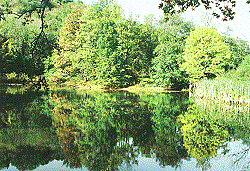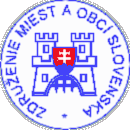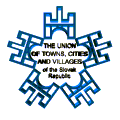Village Halič is situated in the southern part of the Banská Bystrica country 267m above
sea level, 7km away from the district town Lučenec. In the year 1765 was awarded town
privileges and since 1922 has been the district.
Nowadays 1700 inhabitants live here. In 1999 - the 700th anniversary of the first written
mention.
Dominant of village is the castle from the year 1612 on a woodland hill. Look at the
castle is like a fairy tale and view from windows of the castle is so grandiose, it can
be seen 15 surrounding villages and during a good visibility it can be seen some of the
summits of the High Tatra. The castle´s park has extension of 13ha with its artificial
lake. Nowadays the castle is owned by the State and it is supposed to be sold.

|
|
Castle from 1612; Roman-Catholic church from 1835
|
Points of interest, remarkables and rarities

In 1767 the Earl Ján Forgáč founded the first clothing manufacture in the former Hungaria.
In 1932 a steam engine came into operation (the first one in the Central Europe).
From historical buildings preserved a building of the former royal salt office constructed
of Baroque-Classicistic style from the end of the 18th century. There is established a
depository of the Novohradské Museum in Lučenec.
To the cultural monuments belong a building of the former upper clothing factory from
the beginning of the 19th century (state-owner, it is supposed to be sold),
the Roman-Catholic Church from the year 1835 and a building of the Jewish synagogue.

|
|
Pond
|
There was constructed water-supply, gas pipelines, part of canalization and a sewage tank,
electric distribution, telephone cables (under the ground) and asphalt local
communications.
Village is a seat of a two-circuit health centre, chemist, bakery, shopping centre.
There were built a fire station and a mortuary. In the village are many entrepeneurs
whose activity is aimed at handicrafts as art blacksmith, production of office furniture,
wood production of building material, car mechanics and so on.
Because of a good contact with inhabitants of our village the representatives of the
Office issue an irregular magazine "Haličské zvesti". It is sent gratis to each household. This magazine is to be issued three-four times a year of circulation of 650.
Nowadays they issue this magazines the seventh year.
At the beginning of the year 2000 the representatives of the Office will be accepting a
proposal of general village plan and by this there will be created some assumptions for
further development of our village.
History of the Halič castle
The first written mention about the castle in Halič is from the year 1450. At this time on
a hill there had to stand a castle because of having the first written mention about
village Holuch - Halič as the extramural settlement from 1299.
The castle was built without any royal permission by magister Tomáš from Lučenec. In the
years 1450-51 it belonged to the Jiskras, later to Ján Hunyady. In 1462 was owned by the
king Matej Korvín. In the first half of the 16th century it was in property of Štefan
Lučenský (Losonczy) from Lučenec.
The castle was reconstructed without any royal
permission, therefore it was again demaged in 1544.
After death of Štefan Lučenský his daugther Anne inherited this county which married
Zigmund Forgáč (Forgách). The Forgáčs were one of the oldest Hungarian aristocrat family.
Their origin they derived from the Great Moravian family Poznam, which had preserved
their positions in Slovakia after being incorporated into the Hungarian kingdom.
The Halič castle was owned by them till 1945. At a traditional fortificated and strategic
place Zigmund Forgáč built a castle which had been the owner of county since 1598.
In 1612 it was repaired carefully and on the ground plan of a pulled irregular hexagon
was constructed a storeyed building with six corner bastions, insecured by a ditch and
mounds. Wings of this hexagon turned to a courtyard with plain walls which had many
wall paintings with large than life figures of the Roman emperors and the Hungarian
kings between windows and entrances.
At the end of the 17th century Imrich Tokoly had struggled to capture the castle, he
did not succeed. In 1678 when owned by Adam Forgáč, the castle was besieged by Turks.
Defenders repulsed this attack in 1703, too. After 6 years František II Rákozci took
possession of the castle.
Leader of emperor´s troops the General Heister had the castle fired off. Roof and part
of interior equipment had burnt out. The Forgáčs had the castle reconstructed in 1762.
This great reconstruction was caused by need of representative seat. A very famous builder
the Austrian Andre Meyerhoffer was in charge of works, he was famous as builder of some
palaces in Bratislava.
In addition to an amount of rooms with interesting ceilings is the rarest knightly or
county hall where meeting of 42 district offices of Hungaria had taken part in the 18th
and 19th centuries.
The castle was repaired several times.
During World War II was damaged and in 1955-63 repaired and from 1965 to 1993 used for
purposes of the Office of social care for mentally disturbed youth in Halič.
Since 1993 the castle has not been used and with surrounding park is for sale.
Owner of the castle is the Slovak Republik, the Ministry of Labour, Social Affaires
and Family.
Vladimír Rehánek, Mayor of village
Translation: Hošková
|








